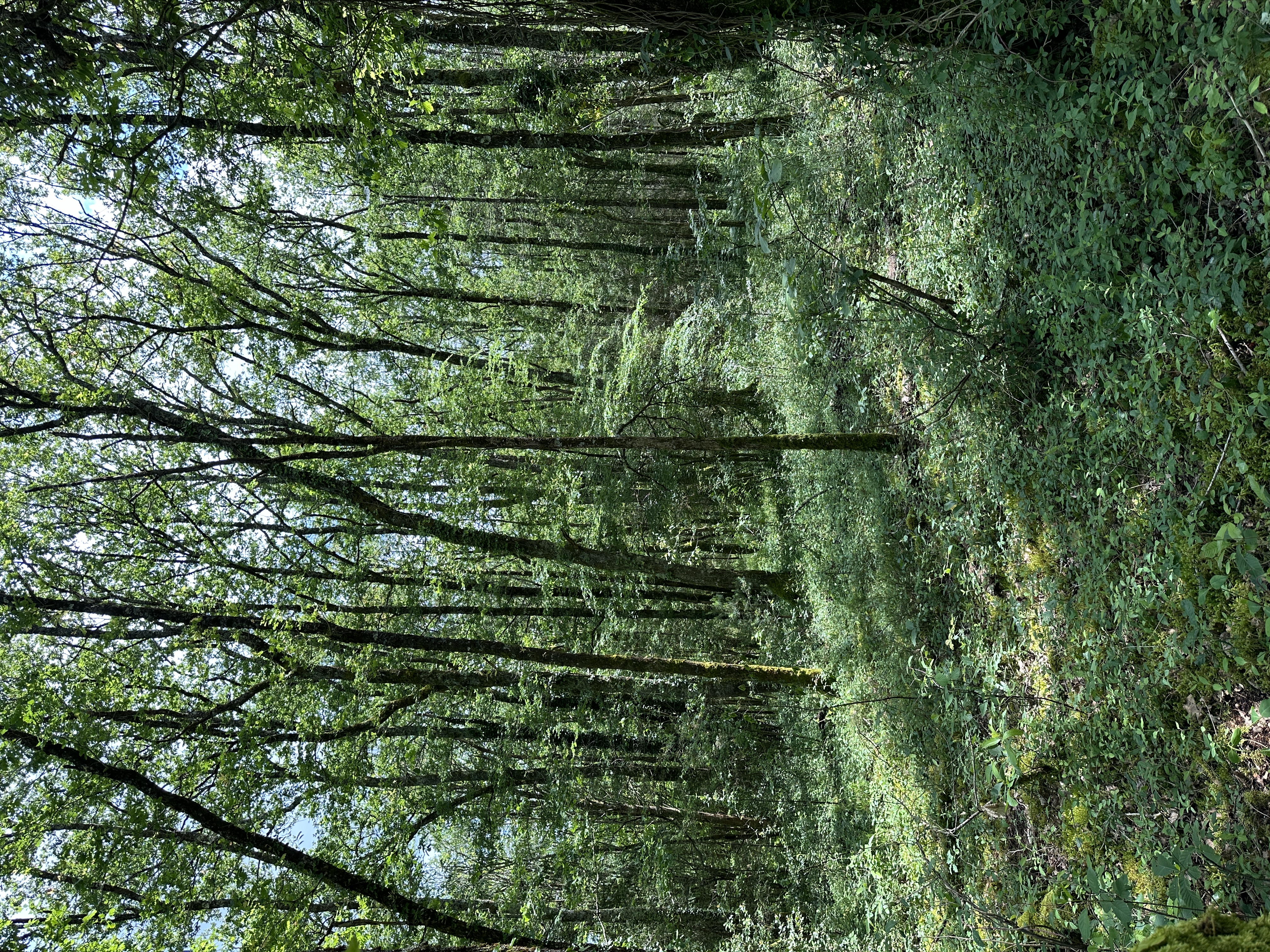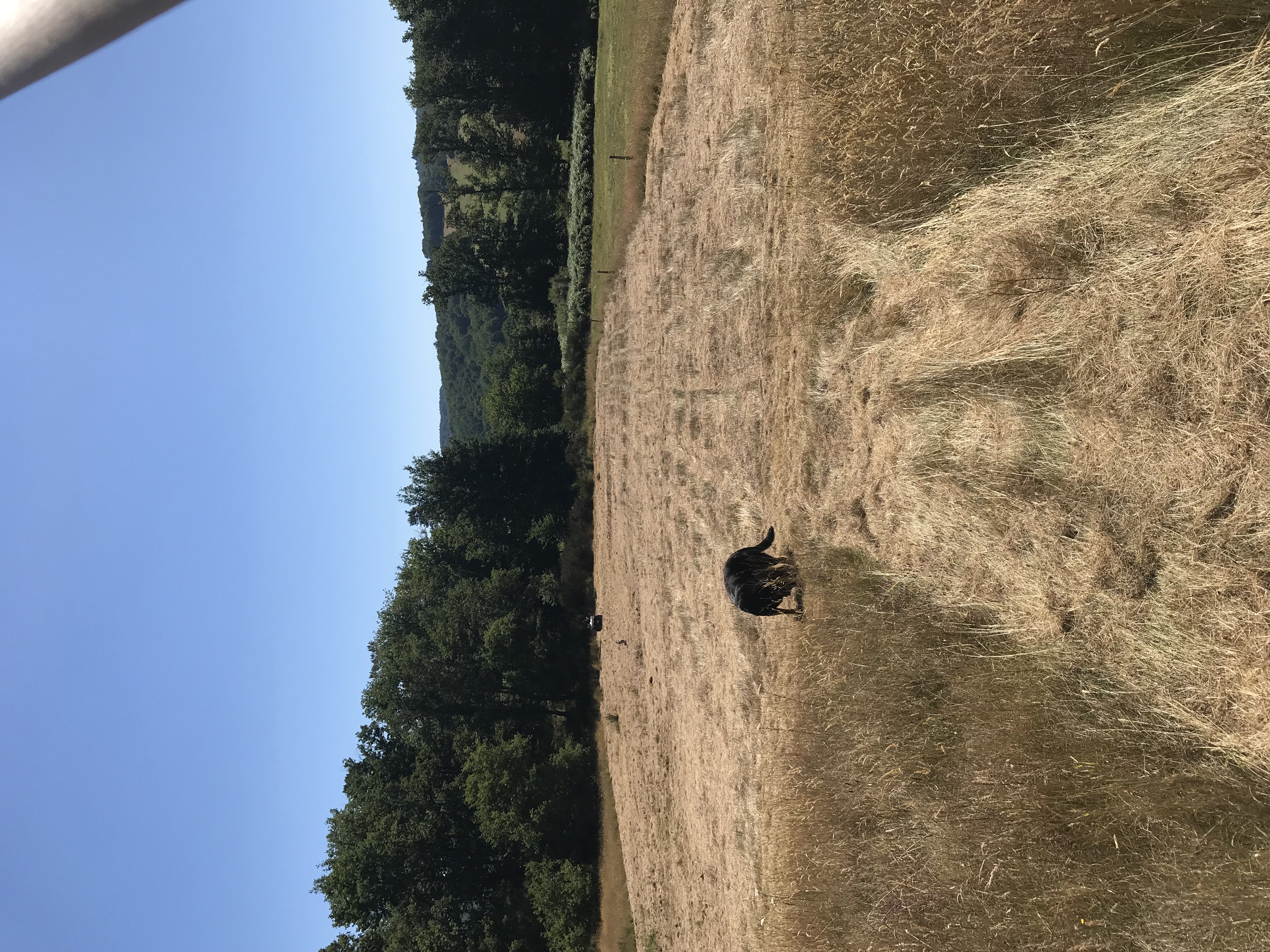
The first question we ask of each other in the morning, and one of the last ‘proper’ questions asked at the end of the day, revolves around the work we need to do for the progression or maintenance of our new home.
This morning’s “What are we doing today?” question resulted in a grin for me.
We’re going into the woods across the road to cut down some of the trees we identified yesterday as dead.

We need posts and rails for fences, posts for a windbreak for the field shelter, and a couple of longer posts to enable us to erect a tarpaulin for additional shade for the summer.


My level of strength is increasing and @s0u1 bought an electric chainsaw just for my own use as it’s not as heavy as the petrol (gas) driven models, nor does it need the same amount of effort to start it. It’s definitely the way forward!

In the late winter/early spring of this year, with the help of our friends, Gail & Tommo, we took down a number of dead trees to use as firewood.

I honestly believed we’d not need to do so much work in that particular woodland this year, but it seems I was wrong. Yesterday’s inspection showed we’ve lost a number of trees and to get the best use out of them, we need to take them down and utilise them for fencing.
Progression with the jobs we’d like to do to improve the property has to be tempered by the jobs we need to do to maintain the property, so mix & match. We could do all the jobs we want to do, and that would be fun and satisfying, but then the maintenance jobs would become overwhelming. ‘A stitch in time, saves nine’ is an important part of maintenance. Leaving maintenance to the last minute is not an efficient use of time or effort. Mending something properly and in a timely manner is better than replacing it – in terms of monetary cost, as well as effort.

Jobs we NEED to do - mow Lake View Paddock

Jobs we WANT to do
The horses need to be kept safe and well and if a fence is down, it needs repairing immediately, or we could have a similar problem to the one last year, where two of our horses escaped into the neighbour’s field and out onto the road.

Keeping the 3 Amigos safe is priority
The field shelter was given a little try-out yesterday. We let the horses into the compound to take a look at what we’ve been doing. They were wary and a little scared, very jumpy and skittish, but I think it will work very well when we’ve completed the work.

Onyx refused to enter the shelter

I’m hoping to get the field shelter finished and ready for them to move in to before the full summer arrives.
The shelter will perform a few duties. Shelter for the horses by way of two compartments, with rain, wind and sun protection, water and feeding stations, a tack-room where their feed and equipment can be stored, and a hay store to make everything easy to manage.
We need a few things to make this work. The hay needs to be square-baled which means we have to buy an old-style baler. These are not easy to come by as the farmers have moved on to the large 400kg-600kg round bales and those bales are too heavy for our mini-tractor to manage on the slope we work on.
If we can find one, that would be perfect, but then we’d need to borrow or buy a bigger tractor.
Or we can make a rudimentary baler and hand-bale the hay. This option is possible and though it would take time and manual effort, it can be done. Watch this space.
For the last two years, we have cut and dried the hay manually – and when I say ‘manually’ I mean with the bare minimum mechanical aids.

Hot, dusty and hard work

Builder's bags will take 1 Tonne of hardcore etc

Using hand tools the first year
The first year, we cut the hay on the small field (Vineyard Paddock) with the tractor mower, turned it to make sure it was dry using pitchforks and brought in around 22 bags (1 Tonne builder’s bags) stuffed with hay. We only managed a small part of the big field, that first year.
The second year, we brought in the Vineyard Paddock’s hay using the tractor mower and the newly-purchased ‘Tedder’ – a device towed behind the tractor which turns the cut grass and stacks it in long lines called ‘Windrows’. We also collected more hay from the big field just behind the Vineyard Paddock in the same way and that made the first time we didn’t have to buy additional hay for the horses.
This year, we possibly have the Vineyard Paddock, the big field, the Dordogne Field and Lake View Paddock to collect from and so the baler would be a great help for the storage.

Big field

First cut

Part done

It's a BIG field!

We got a system going

Big boots and hand tools in scorching weather!

The home-made hand-baler
As an aside, we keep @s0u1’s mum up to date with everything we do in daily phone calls. She just had her 99th birthday. Her father was the Fire Chief when she was a girl and she told us to make double-sure that the hay was completely dry before putting it indoors. She remembers her father being called out regularly during hay-making time because slightly damp hay can heat up to the point where it combusts and that was when the barn fires started.

A lot of hay!
On her advice, @s0u1 bought a long thermometer that sticks in the hay and monitors the temperature.
The hay will be brought in and stored in the barn, baled manually and then transported to the field shelter for storage. That way, we can bale the hay whenever possible and it won’t get dampened by rain or dew.
I’m just having a coffee and then we’ll start the day’s work.
I keep reminding myself: We Live Here!